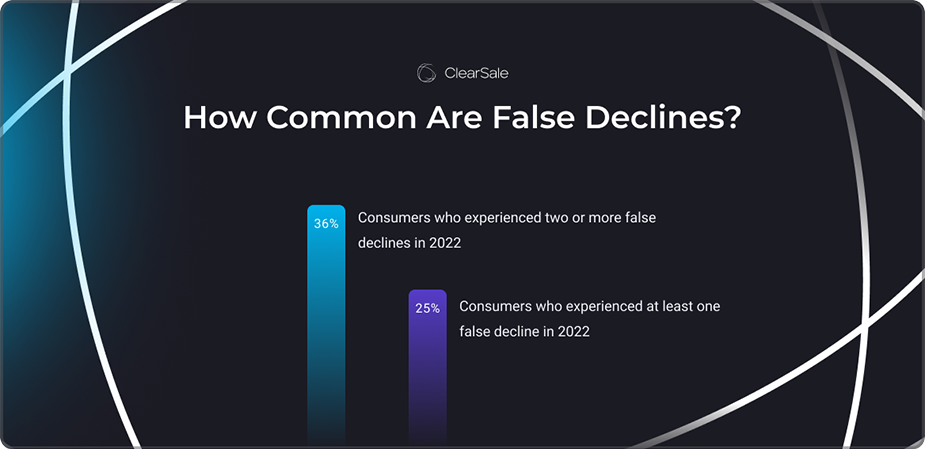ORIGINAL RESEARCH REPORT SUMMARY
Ecommerce False Declines & Consumer Behavior
An executive snapshot for ecommerce leaders
An executive snapshot for ecommerce leaders
With the ecommerce shopping surge comes a wealth of opportunity for fraudsters. They’ve become more sophisticated, leveraging multilevel crime rings and AI bots to mimic valid users. Not only do ecommerce businesses have to protect themselves and their customers from fraud, but they also struggle to distinguish between fraudsters and valid customers. At the same time, businesses can’t be too strict and turn away good orders through false declines.
This balance of fraud protection and establishing trust in the customer’s buying journey presents a challenge. When a customer’s order is falsely declined, that trust is broken.
Just about every ecommerce platform comes standard with fraud filters that use transaction screening and algorithms to fight fraud. While fraud filters are useful, they tend to be overly strict and result in false declines — when a customer’s valid order is declined because the business mistakes it as fraudulent.

Businesses must balance fraud prevention and order approvals while, at the same time, establishing and maintain consumer trust. This highlights the need for a customer-centric approach, which can include:
Allows brands to align content, influencers, advocacy and community with customer needs, wants, and values.
Uses natural language processing and custom responses, leveraging real-time and historical customer behavior and purchasing data.
Limits the steps consumers have to take to successfully make a purchase.
Is essential for loyalty and involves:
Another important trend that has become especially obvious of late is disparate consumer behavior based on age.
Download the full report to learn what we discovered about generational shopping habits and more:
To have access to all of the chapter of this study, please fill the form below.